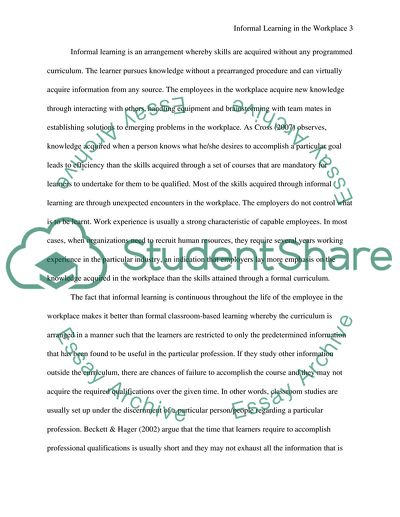Cite this document
(“Informal Learning in the workplace is a more significant, effective Essay”, n.d.)
Informal Learning in the workplace is a more significant, effective Essay. Retrieved from https://studentshare.org/miscellaneous/1562333-informal-learning-in-the-workplace-is-a-more-significant-effective-and-superior-form-of-learning-to-formal-classroom-based-learning-critically-discuss-this-statement
Informal Learning in the workplace is a more significant, effective Essay. Retrieved from https://studentshare.org/miscellaneous/1562333-informal-learning-in-the-workplace-is-a-more-significant-effective-and-superior-form-of-learning-to-formal-classroom-based-learning-critically-discuss-this-statement
(Informal Learning in the Workplace Is a More Significant, Effective Essay)
Informal Learning in the Workplace Is a More Significant, Effective Essay. https://studentshare.org/miscellaneous/1562333-informal-learning-in-the-workplace-is-a-more-significant-effective-and-superior-form-of-learning-to-formal-classroom-based-learning-critically-discuss-this-statement.
Informal Learning in the Workplace Is a More Significant, Effective Essay. https://studentshare.org/miscellaneous/1562333-informal-learning-in-the-workplace-is-a-more-significant-effective-and-superior-form-of-learning-to-formal-classroom-based-learning-critically-discuss-this-statement.
“Informal Learning in the Workplace Is a More Significant, Effective Essay”, n.d. https://studentshare.org/miscellaneous/1562333-informal-learning-in-the-workplace-is-a-more-significant-effective-and-superior-form-of-learning-to-formal-classroom-based-learning-critically-discuss-this-statement.


